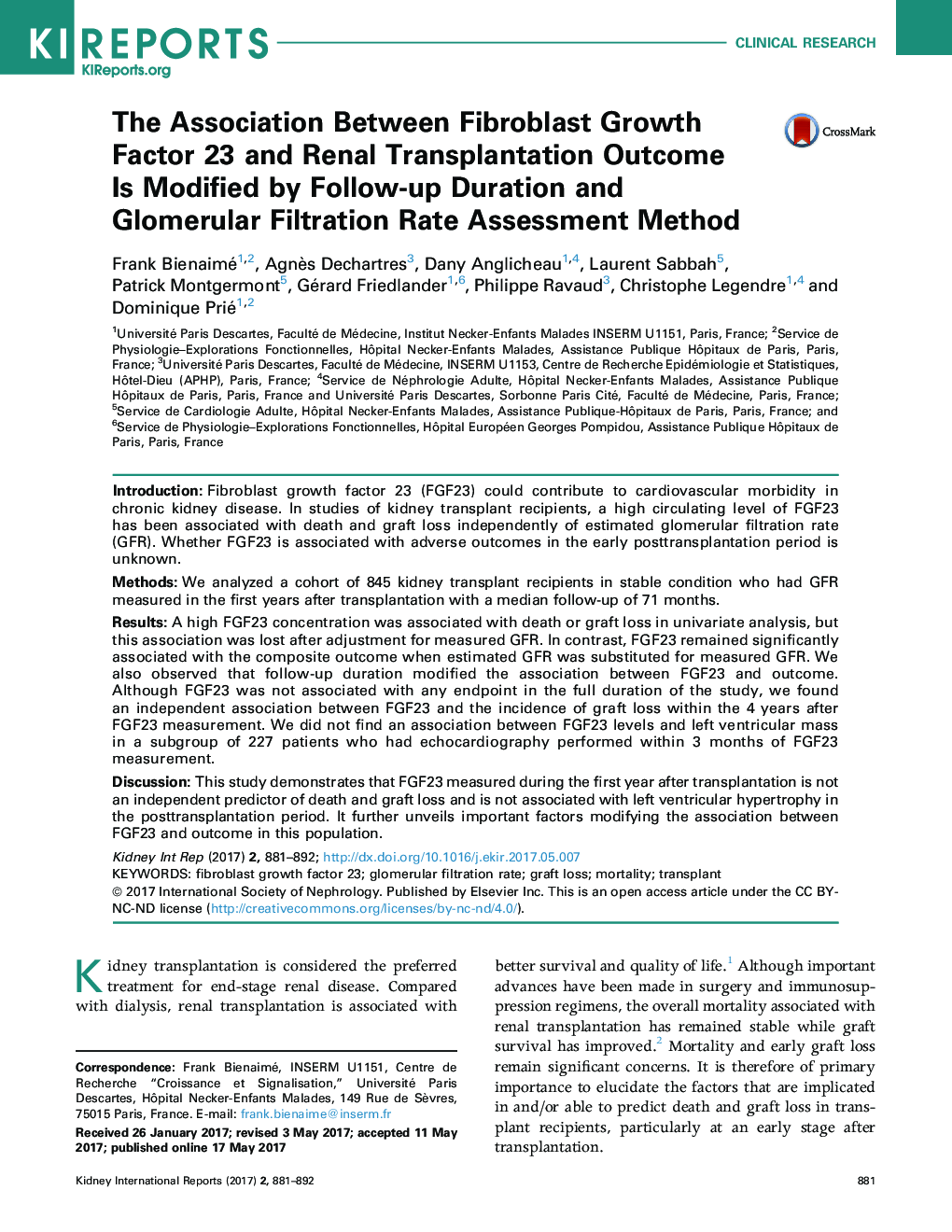| Article ID | Journal | Published Year | Pages | File Type |
|---|---|---|---|---|
| 5689896 | Kidney International Reports | 2017 | 12 Pages |
IntroductionFibroblast growth factor 23 (FGF23) could contribute to cardiovascular morbidity in chronic kidney disease. In studies of kidney transplant recipients, a high circulating level of FGF23 has been associated with death and graft loss independently of estimated glomerular filtration rate (GFR). Whether FGF23 is associated with adverse outcomes in the early posttransplantation period is unknown.MethodsWe analyzed a cohort of 845 kidney transplant recipients in stable condition who had GFR measured in the first years after transplantation with a median follow-up of 71 months.ResultsA high FGF23 concentration was associated with death or graft loss in univariate analysis, but this association was lost after adjustment for measured GFR. In contrast, FGF23 remained significantly associated with the composite outcome when estimated GFR was substituted for measured GFR. We also observed that follow-up duration modified the association between FGF23 and outcome. Although FGF23 was not associated with any endpoint in the full duration of the study, we found an independent association between FGF23 and the incidence of graft loss within the 4 years after FGF23 measurement. We did not find an association between FGF23 levels and left ventricular mass in a subgroup of 227 patients who had echocardiography performed within 3 months of FGF23 measurement.DiscussionThis study demonstrates that FGF23 measured during the first year after transplantation is not an independent predictor of death and graft loss and is not associated with left ventricular hypertrophy in the posttransplantation period. It further unveils important factors modifying the association between FGF23 and outcome in this population.
